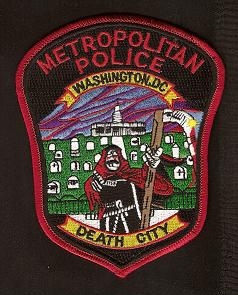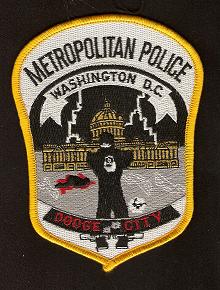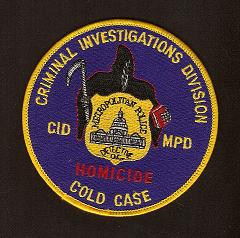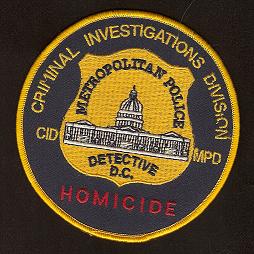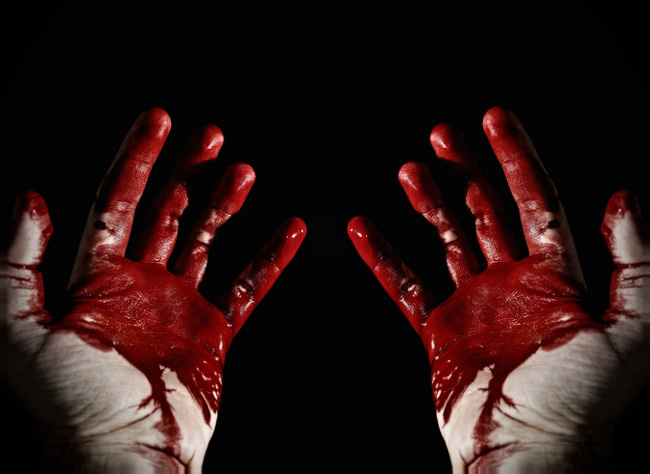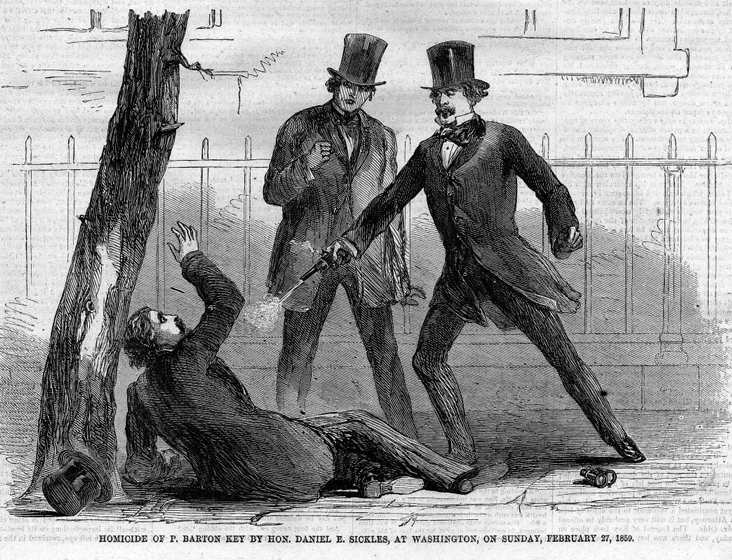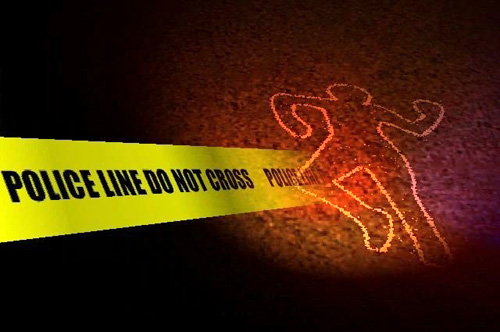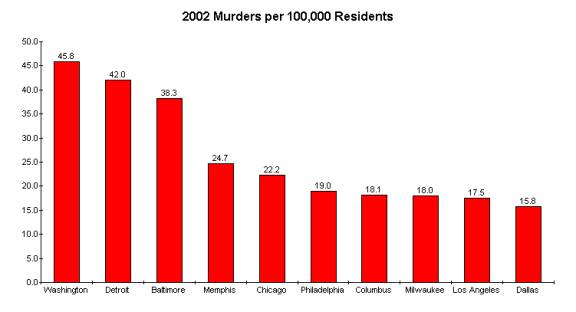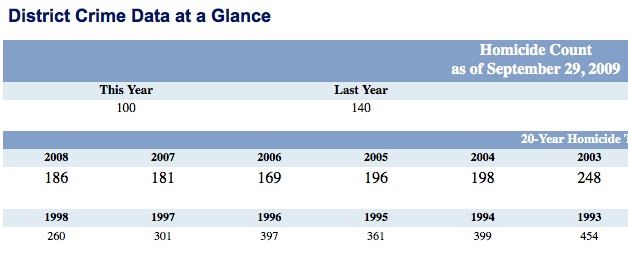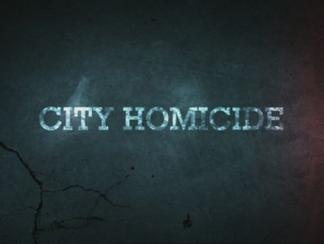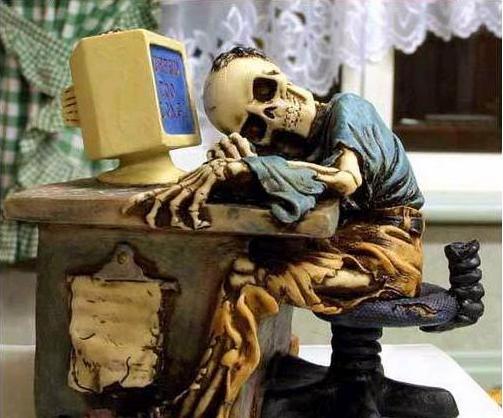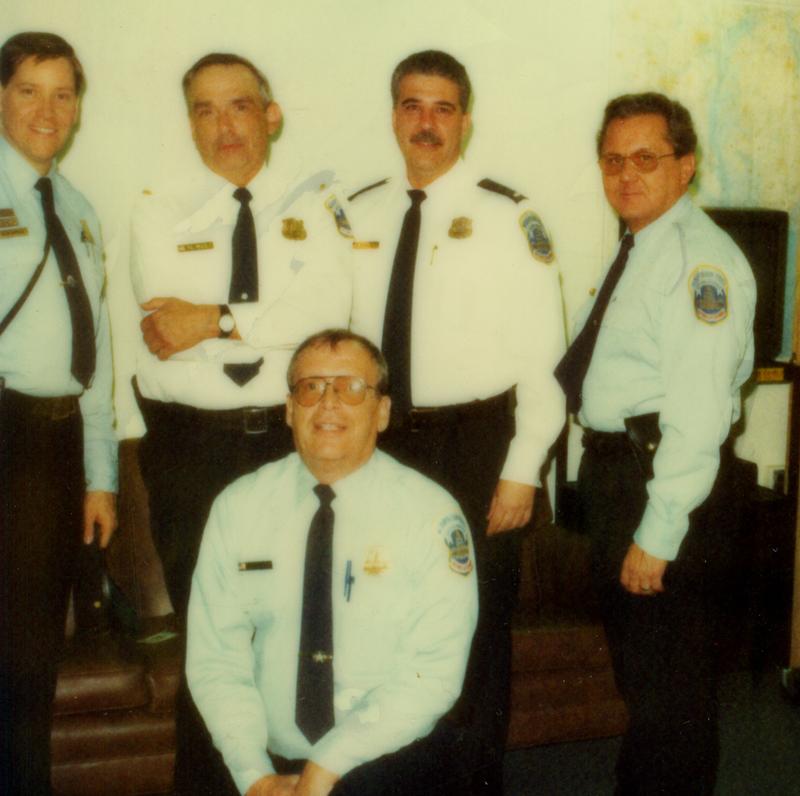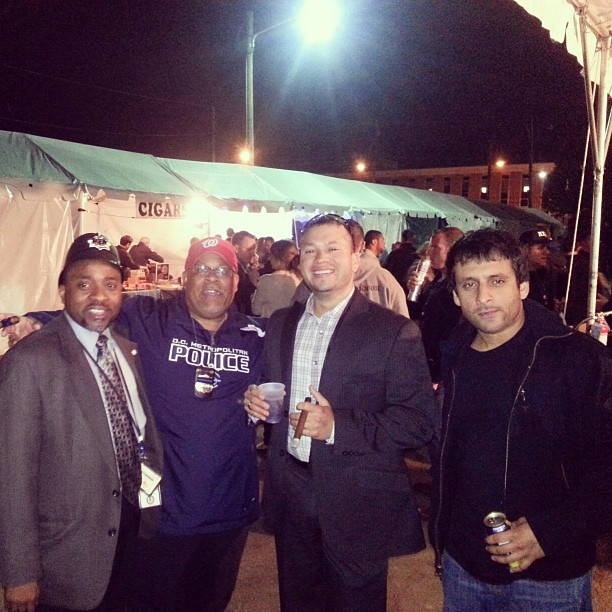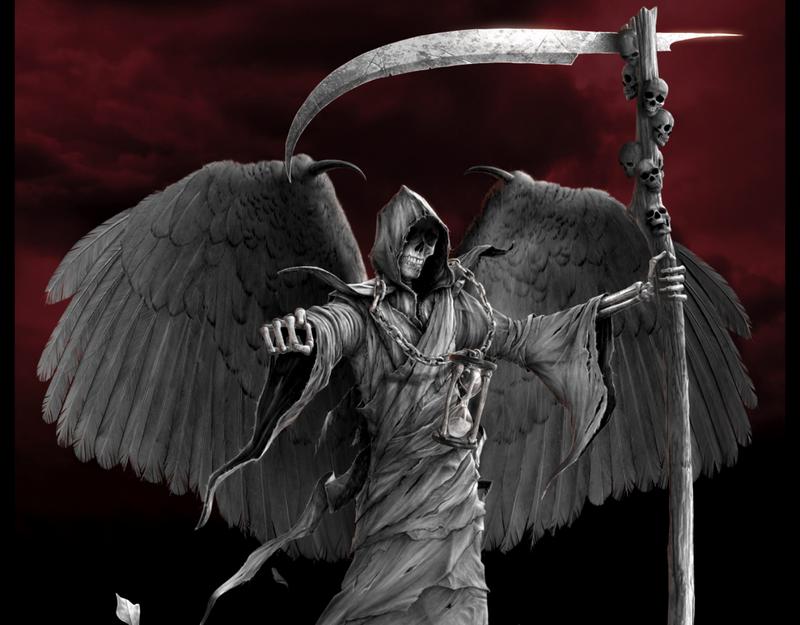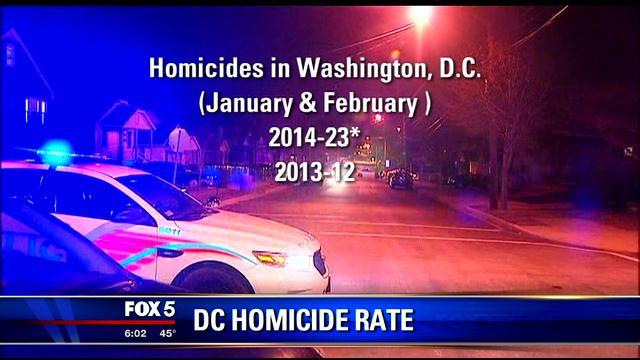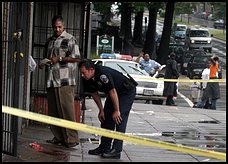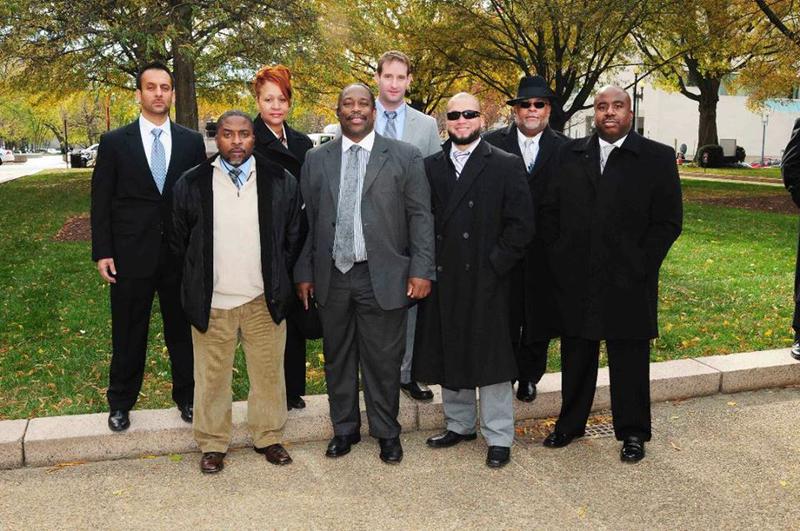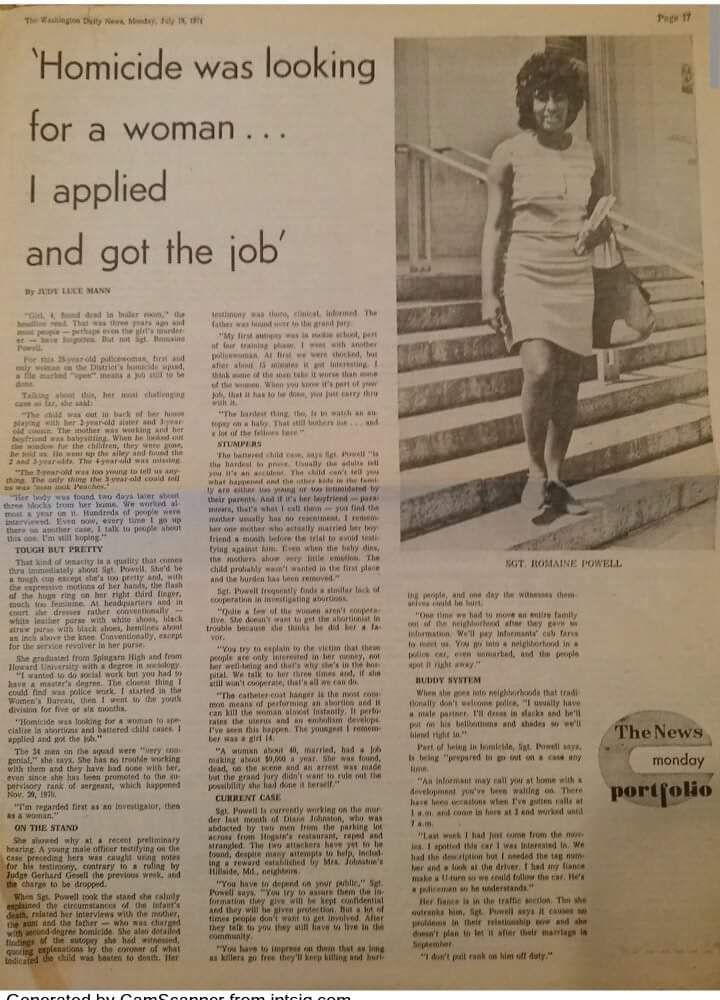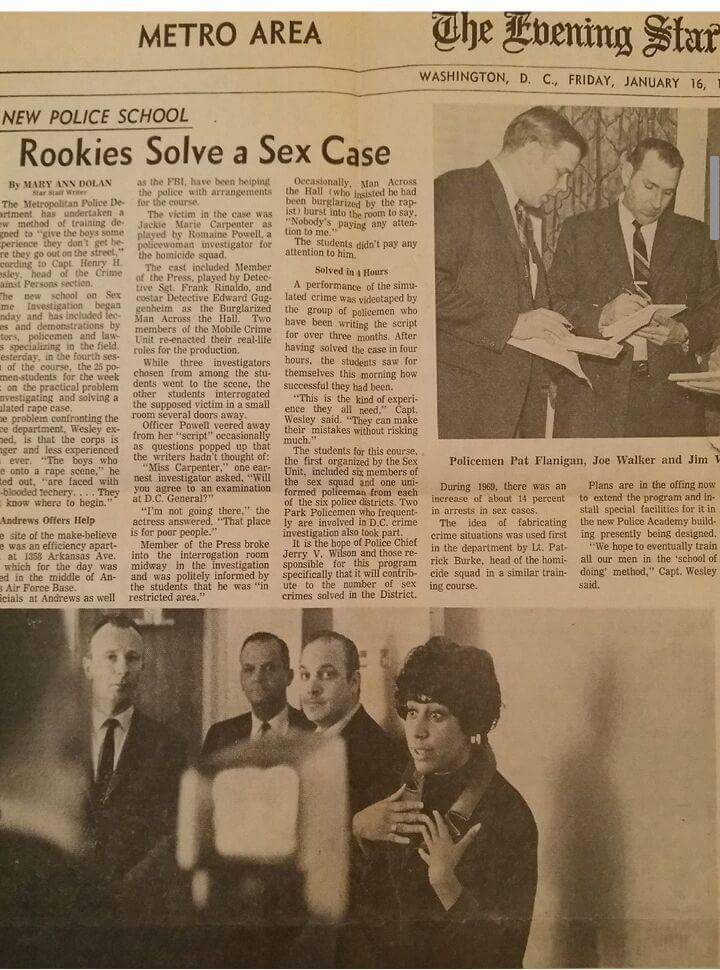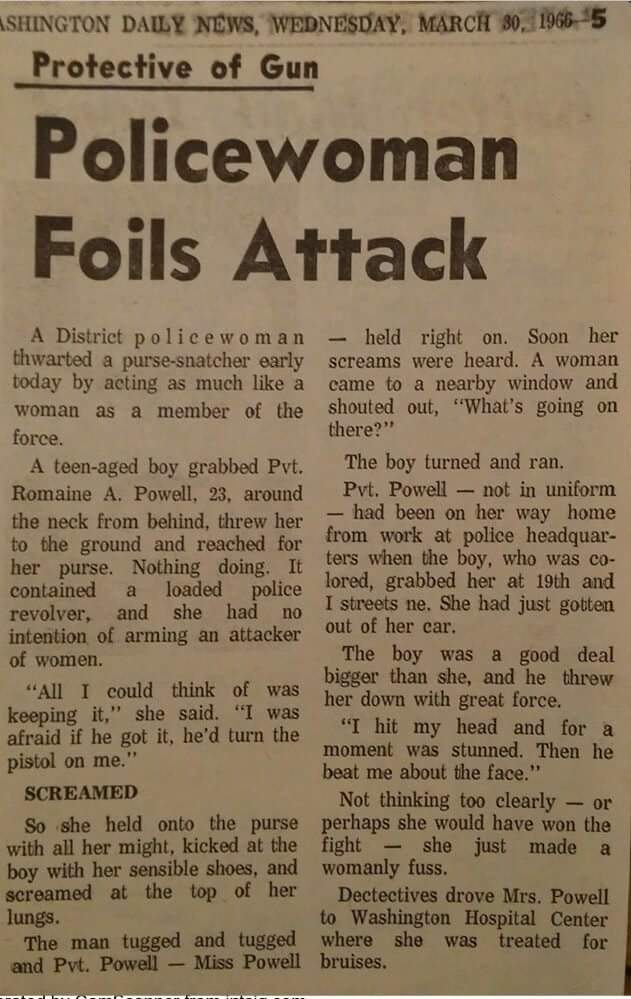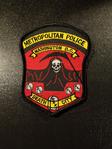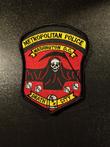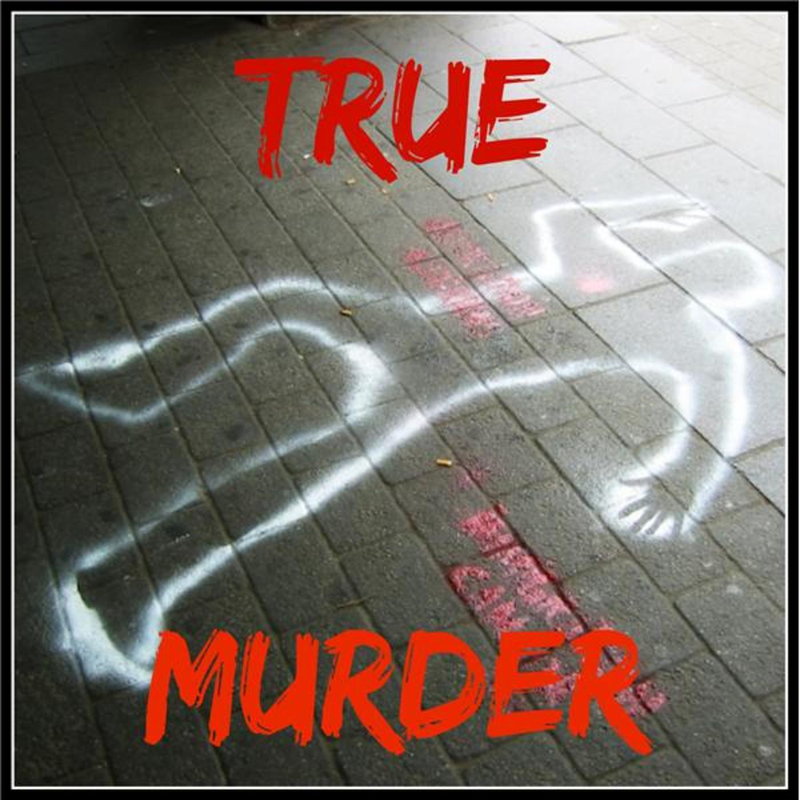HOMICIDE
 | ||||||
 | ||||||
___________________________________________________________________________________________________________________
 | ||||||
D.C.
By Police District, 2001-2009
BY Joshua A. Markman and John K. Roman
In 2009, the District of Columbia
experienced a dramatic drop in homicides,
and violent crime more
broadly. Homicides decreased from
186 in 2008 to 143 in 2009, a decline of
more than 20 percent. The last time the
District of Columbia had fewer than 143
homicides was 1966 and the homicide rate,
which incorporates District population
changes, in 2009 was the lowest since 1968.
Mirroring national trends, homicide in the
District of Columbia has declined more
than 70 percent since 1991 when there were
483 homicides at the peak of the crime
wave. As has been true in many major
cities, the declining homicide trend was followed by a slow increase in homicides from 2006 to
2008. While the decline in 2009 is a welcome respite from that trend, the question remains whether
the drop in homicide in 2009 was the start of a new downward trend or simply an aberration. So
far this year, that trend has continued: as of May 20, there have been only 34 homicides in 2010,
compared with 48 on the same date in 2009.
Citywide Homicides, 1960-2009
This brief is the first in a series of briefs describing the changes in crime patterns in the District of
Columbia over the last decade. This series will report on statistics for all major cateogories of crime.
Brief: Homicide in the District of Columbia
Among crime statistics, homicide trends are uniquely unstable, and thus forecasting future homicide
rates is risky. However, given the overall homicide decline, it is fair to ask whether the entire city has
experienced a decline or whether the trend has been localized in select police districts. This brief
examines police district trends in homicide for the past nine years to answer this question. In
general, six of the seven police districts follow the city-wide pattern. The exception is District 4,
where there has been a steady, but small, increase in homicides throughout the period from 9 in
2006 to 17 in 2008 and again in 2009. Because its homicide rates are steady while the remaining
districts show declines, District 4 is encompassing a larger percentage of the city's overall homicide
numbers.
In 2009, there was one homicide not assigned to a District. Because it could not be attributed to a specific District, this homicide
was ommitted from the analysis.
In this paper we report the number of homicides in Districts per 10,000 to develop the rate. Police District populations vary, thus
using a standardized rate allows for comparison across Districts.
All Police District figures were generated by the District of Columbia Crime Policy Institute using Metropolitan Police
Department data for years 2001 - 2009. Data used in the analysis are available at data.dc.gov.
However, this trend hides some interesting variation in homicide patterns by police district.3 Most
police districts experienced modest declines in homicide from 2006 to 2009. In District 5, the
homicide rate was the same in both years, though it did decline from 2008 to 2009 after an uptick
from 2007 to 2008. In Districts 1, 2, and 3, where homicide is rare, it became even rarer, with
homicides declining in District 1 from 2.8 to 1.2, in District 2 from 0.27 to zero, and from 2.28 to
1.49 in District 3. District 7, which has the highest homicide rate of any police district, experienced
a 5 percent decline. Similar to District 5, which saw an uptick in crime in 2007, District 7's crime
rate declined 30 percent from 2007 to 2009.We also note the pattern of homicide across police
districts. In 2006, slightly more than half of homicides (50.9 percent) in the District of Columbia
occurred in Districts 6 and 7. In 2009, despite a large overall reduction in homicide, that figure was
almost identical (51.7 percent). By contrast, District 4 accounted for just more than 5 percent of all
D.C. homicides in 2006, a share that increased to almost 12 percent in 2009. Two other police
districts also had an increasing share of D.C. homicides. Despite no change in the number of
homicides in District 5, the share of D.C. homicides increased from 14 to 17 percent. District 7,
despite a decline in homicides from 44 to 42, experienced a larger share of D.C. homicides in 2009
(29 percent) than in 2006 (26 percent). Overall, District 7 had the highest homicide rate with
Districts 5 and 6 each also having a rate double that of the next closest police district.
BlackSheep Productions 2009
Homicide Isn't Anything New to The District.
Click here to add text.
Even back in 1859 homicides were not all that uncommon. The biggest change is the manner in which the criminals were dealt with. With no Miranda rights and true due process the convictions were not terribly difficult to obtain. The interview process and interrogation methods were often brutal and conducted with violence. Some people may say this is the better way to get convictions.
Perhaps a blending of the two is the correct method. To far to the left or the right and the system tends to bend almost to a break....Even b
 | ||||||
 | ||||||
 | ||||||
______________________________________________________________________________________________________________________________________
Washington D.C. Metropolitan Police
M.P.D.
Homicide Unit
2011 - A Good Year for Homicides in D.C. with an 18% Drop
District officials said Friday that the Metropolitan Police Department has made "phenomenal progress" this year, citing the lowest homicide rate since 1963.
In a year-in-review presentation at police headquarters, Mayor Vince Gray said the city has seen an 18.2 percent drop in homicides. According to the department's website, the city has seen 108 homicides this year, through Thursday, compared to 132 in all of 2010. Gray attributed the District's population growth to the fact that would-be residents now see D.C. as a safer place to live.
Examiner Coverage
# More coverage of Washington-area crime
D.C. Police Chief Cathy Lanier said the homicide department's achievements in 2011 were "nothing short of spectacular." Thirty-three homicides this year were solved within seven days, she said, which helped put an end to retaliatory violence that often led to more homicides. Homicides in the Seventh District, she said, have been reduced by 56 percent.
"The Seventh District typically has more than 100 homicides a year," she said, adding that better relations with the community have helped officers solve more homicides more quickly. "We cut that in half."
Read more at the Washington Examiner:
Information and photos on this unit would be appreciated, especially former members of the Homicide units.
Members of the Homicide Division in an unusual picture of them in uniform.
Members of Washington D.C. 2nd Squad-Homicide enjoy the crowd at Police Week 2013
For Homicide Investigators, The Streets Yield Few Allies
D.C. Case Illuminates Obstacles, Frustrations
By Del Quentin Wilber
Washington Post Staff Writer
Monday, October 25, 2004
Two hours after a killing on a busy street in the middle of a holiday afternoon, only two signs of murder remained: a small puddle of blood slowly dissolving in the rain and D.C. homicide detective Tony Patterson.
The veteran investigator stood under an awning near the spot where the victim had been shot, slowly taking in the desolate scene. The body was gone and so were the crime scene technicians, having taken their pictures and gathered the evidence: two shell casings, a bullet, the victim's bloody T-shirt and an umbrella. No one was around, and the police tape was fluttering to the ground.
D.C. homicide detective Tony Patterson, left, investigates the scene at Rhode Island Avenue and Fourth Street NE, where Larry Baskin was killed in a downpour on the Fourth of July. (Jahi Chikwendiu -- The Washington Post)
Taking a deep breath, Patterson looked into the dark sky and dashed toward his car, beginning an investigation into what police officials said was a typical homicide on the streets of Washington.
For the past few months, The Washington Post followed Patterson as he tried to find the killer of Larry Baskin, a 47-year-old ex-convict slain during the afternoon downpour on Independence Day. The trail has grown cold -- but not for lack of effort. Patterson has questioned dozens of people and returned to the crime scene time and again, seeking any witness who could tie the case together. Often, his best lead has been nothing more than a nickname or the vague description of a potential witness.
Patterson still harbors hope that he will close the case. But the reality is far bleaker. Each day that passes, the chances grow that the Baskin file will end up with the ghosts of other failed cases that Patterson has investigated over the years: starved for clues and stashed in a cardboard box under his desk.
The twists and turns in the Baskin investigation are emblematic of the difficulties that face even such experienced, street-savvy detectives as Patterson. The overwhelming majority of victims have criminal records. Witnesses -- when they can be found -- often have their own checkered pasts. Detectives pin their hopes on prostitutes, drug addicts and others with questionable credibility. The leads come in dribs and drabs and can be maddeningly contradictory.
Given these challenges, the detectives say, it is no wonder that they close only about 60 percent of the city's homicides.
Lying is so common that one homicide detective has taped a poster to the wall of the unit's windowless office that reads: "The Truth: It's Never Too Late to Tell It."
A Brazen Daylight Killing
When he went to work July 4, Patterson was "on the bubble," or due to lead the next homicide investigation. Ever since he was a rookie police officer in the mid-1970s, he had dreamed of doing this kind of work. He had admired how homicide detectives handled some of the most important investigations, how they developed a rapport with informants in the criminal world and how they had a special swagger and style.
Now in his 10th year as a homicide investigator, Patterson has had his share of big cases, including the only D.C. slaying committed in the sniper attacks of 2002, and he has his own flair. He almost always wears well-pressed dress shirts, slacks and suit coats that fall neatly on his slim frame, hiding one gun on his hip and another in an ankle holster. His shoes are perfectly shined, and he has a diamond earring in his left ear. He keeps his salt-and-pepper hair cropped close to his scalp, and he wears square-rimmed eyeglasses. He projects confidence, whether his cases are going well or not.
But even after all this time on the job, the 51-year-old detective felt slightly anxious being on the bubble. Would his next killing be a "chicken bone," a slaying that is easy to solve? Or would it be a "predator murder," a homicide sparked by a street beef or drug deal that would present dozens of challenges he might not be able to overcome?
The answer came shortly after noon. Patterson was at D.C. police headquarters when he got a page telling him of a shooting at Rhode Island Avenue and Fourth Street NE. A supervisor called him a short while later: The victim was declared dead at Washington Hospital Center with multiple gunshot wounds.
By then, other detectives and officers were scouring the area near the shooting. They had rounded up three potential witnesses and brought them to the homicide unit's office in Southeast Washington for questioning. Instead of going first to the crime scene, which already was well covered by police, Patterson headed to the homicide unit's office in hopes that the witnesses would have information needed to quickly solve the case.
Two of the witnesses were being interviewed by other investigators, and Patterson concluded that they would not be very helpful. Both said they had heard the gunfire but did not see the shooting. One told of seeing a man flee.
PART II
For Homicide Investigators, The Streets Yield Few Allies
Patterson spoke to the third witness, who appeared to have the most potential. The man said he saw a gunman approach a group of men standing under an awning of a boarded-up barbershop to avoid the rain. The man fired two shots and rode off in a Ford Explorer, he said. He described the man as older, 5 feet 7, 140 pounds and balding. Although he said he did not know the assailant, he offered to help Patterson find other witnesses.
Grateful for the help, Patterson had some immediate worries -- his witness exhibited signs of being a heroin addict and alcoholic. The witness was extremely thin, lived on the streets and wore tattered, filthy clothing. His hands were swollen, a sign of circulation problems tied to heroin abuse.
D.C. homicide detective Tony Patterson, left, investigates the scene at Rhode Island Avenue and Fourth Street NE, where Larry Baskin was killed in a downpour on the Fourth of July. (Jahi Chikwendiu -- The Washington Post)
After getting the man's account, Patterson put out an alert for a Ford Explorer. He got into his unmarked cruiser and drove to the crime scene, a busy area near a firehouse, convenience store, pizza shop and large mall. But not many people were out, driven indoors by the rain.
Patterson thought about the weather and what it meant. The killer must have been determined to target Larry Baskin, Patterson figured, because he had to walk several hundred feet in a deluge before firing the two shots at close range.
A predator murder.
The victim was identified with the help of prison documents found in his pants pocket. It turned out that Baskin had been released from prison only a day earlier after serving six months for violating probation in a drug distribution case.
Baskin had previous convictions for armed robbery and assault with a deadly weapon. In the latter case, he shot a man in the thigh in January 1998 because the man tried to evict him. Baskin had been living in the man's basement.
It took Patterson about four hours to locate Baskin's sister, DeLyssia Janifer. She said her brother had just gotten out of a federal prison in Allenwood, Pa., and was supposed to have reported to a homeless shelter. He went to his old neighborhood instead, she said.
He had odd jobs over the years but spent most of his life in and out of prison, she told the investigator. Baskin, the son of a federal government worker and a homemaker, also had two brothers.
"I never even got a chance to talk to him. He only just got out," Janifer said, her eyes red from crying earlier. "I don't know what this could have been about."
Clues Diminishing Quickly
The first 48 hours of a homicide case are critical for detectives because memories are freshest and witnesses are easiest to find. So far, Patterson's case was not looking good. His witnesses were not very compelling, his victim was less than sympathetic, and the forensic evidence was unlikely on its own to lead to any suspects.
For Patterson, it was a painfully familiar scenario. Each day, he deals with people on the fringe of society, working through a maze of lies, half-truths, grief and anger.
The day after Baskin was killed, Patterson and his partner, a young investigator named Doug Carlson, returned to the Rhode Island Avenue area, hoping to locate surveillance cameras in nearby businesses or rooftops. Maybe the shooting or its aftermath was captured on tape. Neither detective expected much. These cameras almost never even work, they explained.
True to form, a convenience store's camera that might have shown the killing had no tape. None of the other cameras in the area was pointed in the direction of the shooting.
PART III
No cameras, no new witnesses, no breakthroughs.
Then, as the investigators walked near the crime scene, they came across their one star witness: the man who claimed to have seen the shooting. He seemed slightly disoriented and constantly blinked bloodshot eyes. He was shuffling along the street in front of the homicide scene, right over the spot where Baskin was shot.
The man went through his story again, and Patterson and Carlson were relieved as he repeated what he had said the previous day. Demonstrating what he saw, the man held out his right hand like a gun and pretended to pull the trigger. Two shots, he said. He even pointed to the exact spot where the gunman had stood.
D.C. homicide detective Tony Patterson, left, investigates the scene at Rhode Island Avenue and Fourth Street NE, where Larry Baskin was killed in a downpour on the Fourth of July. (Jahi Chikwendiu -- The Washington Post)
One problem: The man was standing about 30 feet from where police had recovered shell casings. The detectives exchanged a quick glance, realizing that the witness's story did not match evidence indicating where the shots had been fired.
The trip to the neighborhood produced nothing of value, and the case appeared to be getting weaker instead of stronger. But that night, Patterson received a page that gave him a lift. A neighborhood informant was saying one of Baskin's girlfriends had information about the killing. Though he was off duty, Patterson went back to work.
He located the girlfriend at her apartment and took her to the homicide office. Baskin had been trying to sell heroin the day he was shot, she said. She did not see the shooting, she told the police. But offering to help, she provided some nicknames of people who might have been there. She said she did not know their full names.
The next morning, Patterson and Carlson resumed their canvassing of the area near the crime scene, chatting with nearly a dozen more people. Most claimed to know nothing. Some had been drinking, their clothes and breath reeking of liquor. Some admitted to using heroin recently.
One man told Patterson that he had heard about the killing, that it had been a brazen attack, that the gunman had told some people to get out of the way. But he didn't see it.
As they drove back to the office, Patterson and Carlson remained at a loss. The first 48 hours were up, and they weren't getting any closer.
Patterson has seen his share of motives over the years: killings over women, a craps game, drug turf, neighborhood rivalries, other beefs. "It's sad. It's unbelievable, really, what you see," he said.
"Some of the things you see -- really, you just walk away asking why would someone do that to another person," Patterson continued. "What could that person have done to provoke that? I don't know why anyone kills anyone. I guess some people are just cold and brutal, vicious."
He and Carlson mulled the potential motives in Baskin's case. Maybe he was killed over a drug dispute. Perhaps it was over turf or cash. Or maybe it was retaliation by someone he had harmed in or out of prison during his troubled life.
"There are almost too many possibilities," Patterson told Carlson. "Who knows why this guy was shot? My man certainly had lots of enemies."
Violence Avenged?
A week after Baskin's death, Patterson was on the hunt for clues -- at Baskin's funeral.
PART IV
The detective went to Shiloh Baptist Church in Northwest Washington to let the family know he cared and to get a feel for the victim's friends and life.
The funeral took place in the church's gym, and a handful of family members and friends sat in rows of plastic chairs facing Baskin's open casket, placed directly under a basketball hoop. As the detective scanned the funeral program and a short biography of Baskin, he halted at a line that delicately described his victim's problems:
D.C. homicide detective Tony Patterson, left, investigates the scene at Rhode Island Avenue and Fourth Street NE, where Larry Baskin was killed in a downpour on the Fourth of July. (Jahi Chikwendiu -- The Washington Post)
"Although Larry fell victim to some of the vices prevalent in many cities today, he remained a caring person and shared a deep love for his family."
Patterson was hoping to talk again with Baskin's girlfriend at the funeral, figuring she probably had more information. But he didn't get the chance -- he said he learned that she slipped out after someone told her he was there.
The woman was getting on Patterson's nerves. She wasn't returning his calls, and he could not understand what he viewed as her half-hearted cooperation.
The day after the funeral, Patterson had another chance to catch up with the woman. He and Carlson saw her on Fourth Street NE, sitting on a newspaper box. Instead of simply getting out of his unmarked car and approaching her, Patterson came up with a strategy that backfired. He believed she was wanted on a minor warrant, a violation that could keep her locked up while detectives questioned her.
He radioed for help from patrol officers to apprehend the woman; if someone else arrested her, he reasoned, she might still be willing to talk to him. But before police could act, the girlfriend spotted the detectives and vanished into a maze of alleys and back yards.
"This is unbelievable," Patterson said, slightly out of breath after trying to chase her. "It's her boyfriend, her friend, and she is running from the police."
When he wasn't on the streets trying to gather new leads, Patterson was in his office, trying to match the first names or nicknames of the people who supposedly had seen the killing, with police mug shots from databases of criminal suspects. He had enough matches to fill a small folder, which he carried with him to the neighborhood, and it wasn't long before he spotted a woman in one of the photographs.
She denied seeing the killing but said she had heard that Baskin was slain in retaliation for an earlier act of violence. She provided a nickname of the possible killer -- another tip that proved unfounded.
Over the next few weeks, Patterson ruled out several potential suspects and found more avenues to explore. The man who was shot by Baskin in 1998 did not match the description of his killer. People who knew Baskin said he was known to assault people, often while on heroin. Patterson believed that Baskin was killed by someone avenging an act of violence.
But nothing fell into place.
A Final Bad Break
It was inevitable. On July 25 -- three weeks after Baskin was killed -- Patterson picked up another homicide case. The victim this time was a 22-year-old Greenbelt man, Terron Corum, shot as he sat behind the wheel of a car parked at a gas station in Northeast Washington.
The routine was familiar. Patterson discovered a surveillance camera near the scene, but it had no tape. He had just one witness -- a prostitute who only glimpsed the gunman's car. He knew of no suspects and had no physical evidence. The motive appeared to be carjacking.
PART V
As Patterson labored on his fresh case and delved into older ones, he helped Carlson investigate the killing of 15-year-old Myesha Lowe, a high-profile slaying that resulted in an arrest. He received tips on old homicides and spent hours and days chasing them down, often without results.
Patterson, one of 40 detectives tackling recent killings in the D.C. police violent crimes branch, has many demands on his time: Homicide investigators help one another as the need arises, debriefing witnesses, serving warrants, swarming murder scenes. He frequently pitches in to aid the six other detectives on his squad. With his squad going through a busy stretch, Baskin's homicide case went from front burner to back burner.
D.C. homicide detective Tony Patterson, left, investigates the scene at Rhode Island Avenue and Fourth Street NE, where Larry Baskin was killed in a downpour on the Fourth of July. (Jahi Chikwendiu -- The Washington Post)
Patterson continued to pursue leads that evaporated with further investigation. He finally found the girlfriend this month. She, too, suggested that Baskin was killed in retaliation for an act of violence but offered little else of substance.
He kept Baskin's family posted on his lack of progress. Baskin's sister said she thought the detective was doing what he could.
"I don't think he's getting any cooperation from witnesses," Janifer said. "I mean, this happened in broad daylight at noon on July the 4th. I guess people are just afraid to come forward."
On one of his most recent trips back to the crime scene, Patterson once again came upon the man who remained his star witness, the one person he felt might ultimately be able to identify the killer. The man was wearing a fraying baseball cap and a stained T-shirt.
Patterson pulled up and asked the man how he was doing.
"Not so good, Tony," the witness said, his voice gruff and scratchy.
"What's wrong?"
"It's my eyesight," the man said. "My eyes are infected. I can't see."
Patterson gripped the steering wheel tightly. He could not believe what his only eyewitness was saying: that he was going blind.
D.C. homicide detective Tony Patterson, left, investigates the scene at Rhode Island Avenue and Fourth Street NE, where Larry Baskin was killed in a downpour on the Fourth of July. (Jahi Chikwendiu -- The Washington Post)
Homicide branch Squad #2, Motto: " Our Day Starts When Your Day Ends"
12 Years In Hell, We Survived.
A well documented story on D.C. Homicide epidemic of 80's into the 90's.
Please visit the bottom of the page to view the brief video
"12 Years In Hell"
 | ||||||
From 1988 in the 1999 over 4,500 homicides took place in D.C. It was a period of time where homicide's in D.C. would become the norm.
Soon this era in Washington D.C. was to became known as "Death City ?
"12 Years In Hell" - DC 1988-1999
Testimonials will be from ex-homicide detectives, ex-vice officers, ex-drug dealers, convicted murderers, families of victims, survivors, community leaders and more. A project by #SafeHouseDC non profit organization. Engage-Educate-Empower
Mitch Credle is a former homicide Detective with the Washington D.C. Metropolitan Police. He investigated some of the most gruesome murders in out countries capital city for 23 years. This is a brief insight into his documentary. It has been put together about a time when the M.P.D.C. policed DEATH CITY !

